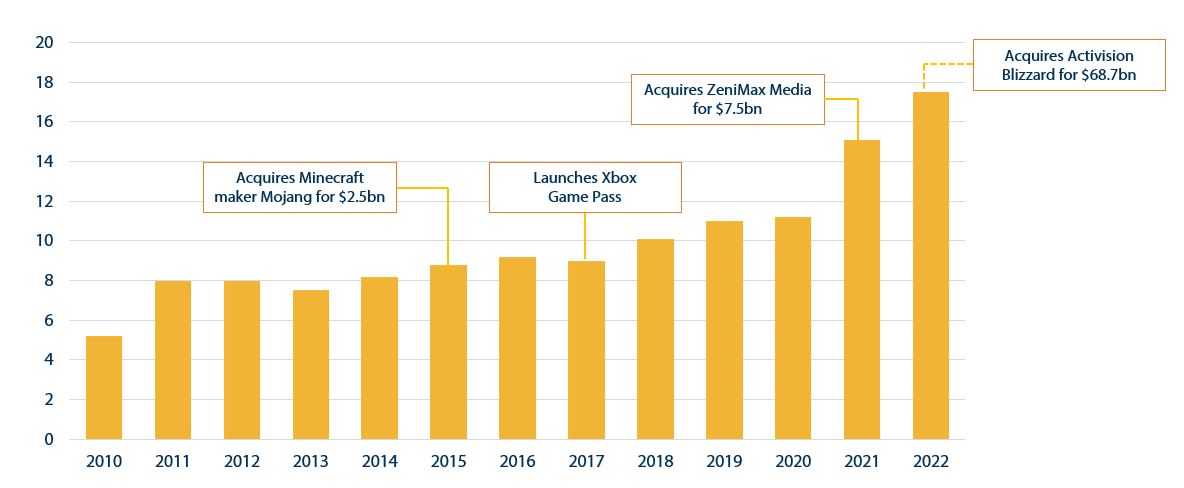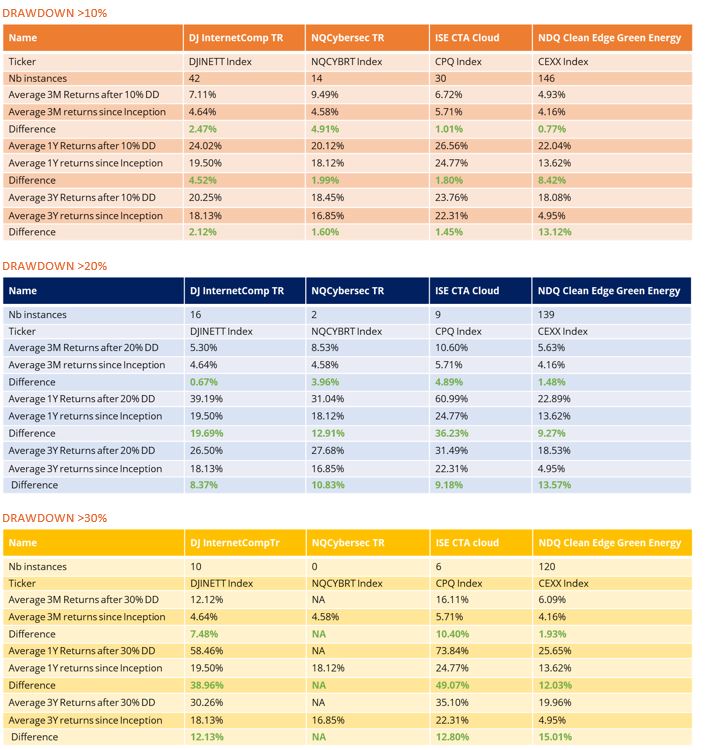When Microsoft announced its intent to acquire Activision Blizzard in an all-cash transaction valued at $68.7 billion, the largest acquisition in its history, investors were keen to understand the play. So what is it that Microsoft is actually after here?
Firstly, it clearly shows intent to secure a much larger piece of the gaming industry, currently valued upwards of $200 billion. As we’ve mentioned previously, gaming is big business: currently around 3 billion people play video games, with that number predicted to jump 50% by 2030.1 With new business models like games as a subscription, games as a service, cloud gaming, and micro-transactions (digital purchases users can make in a game) among others, the industry is undergoing meaningful innovation. Against this backdrop the deal makes a lot of sense.
If the deal is successful (and not blocked by the FTC – more on this below) it would make Microsoft the third largest gaming company globally by revenue, following Sony Interactive Entertainment and Tencent. Microsoft’s gaming business generated $15 billion in revenue in fiscal 2021 while Activision generated a further $9 billion.
What this effectively means is that with the addition of Activision Microsoft will control 14% of the industry. Microsoft is clearly taking gaming seriously: it first ventured into video gaming in 2001 with the release of the Xbox console, in 2014 it paid $2.5 billion to acquire Mojang, which makes Minecraft and in 2017 it was an early mover in the games as a subscription business model with its offering “Game Pass” which today has over 25 million active subscribers. And just last year, Microsoft acquired ZeniMax Media for $7.5 billion, which served to bring a further eight different game studios under its umbrella.
Today, Microsoft’s’ gaming division includes 23 game design and software studios and hundreds of games, and all this is before the addition of Activision. And it is hard to understate what Microsoft would be gaining in terms of Activision Blizzard’s standing in today’s gaming industry, between its very profitable franchises, including Call of Duty, Overwatch, World of Warcraft and Diablo, its mobile game division King, of Candy Crush fame, alongside driving $8.1 billion in revenue in 2020 (a 25% increase from the year before).
Key takeaways
- What's behind Microsoft's planned acquisition of Activision Blizzard valued at $68.7billion - the largest acquisition in its history?
- Microsoft is clearly taking gaming seriously - with the addition of Activision Microsoft will control 14% of the industry.
- Could this be about the Metaverse? the deal looks like it could play a critical role in the development of the Metaverse.








Share